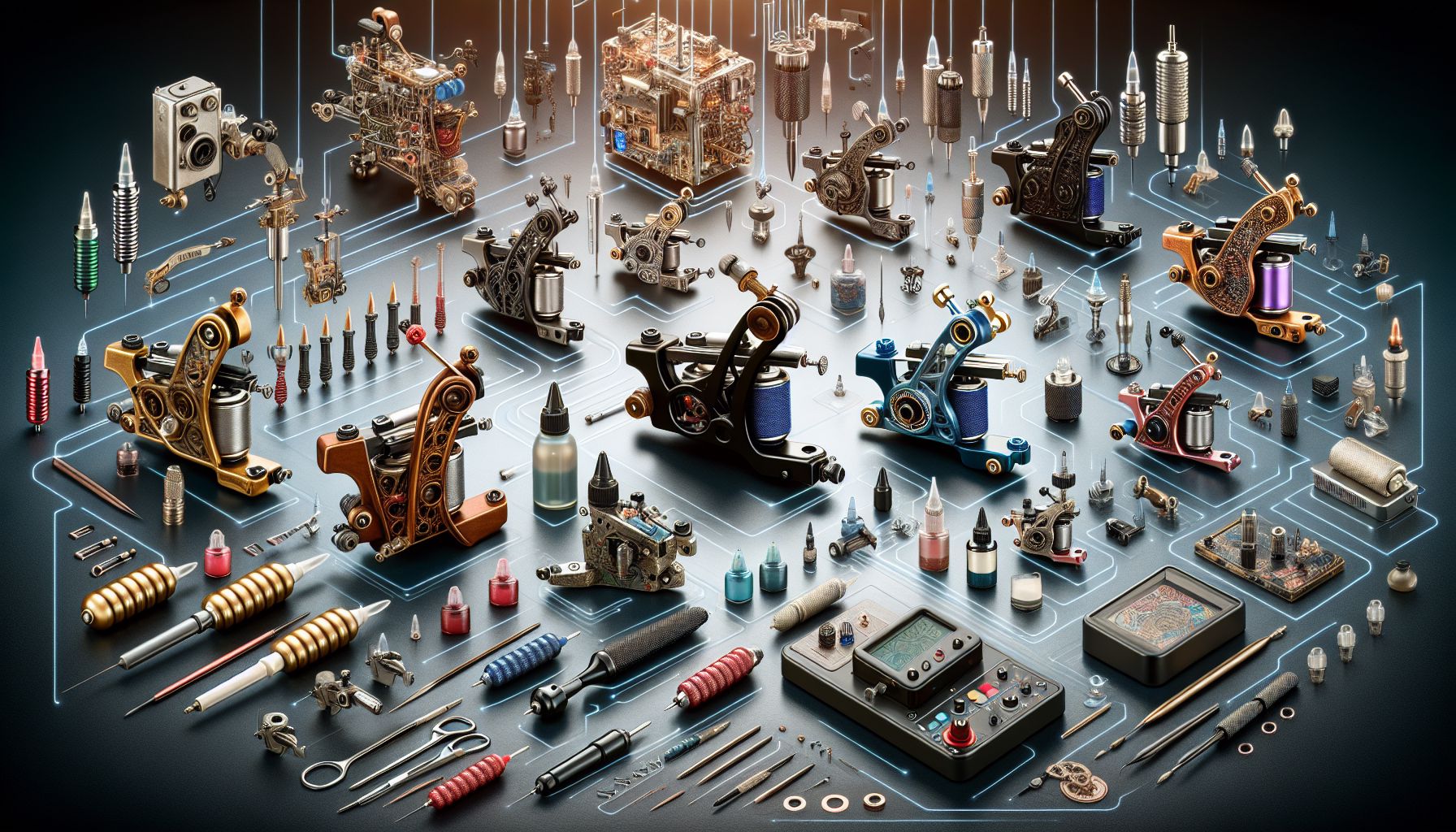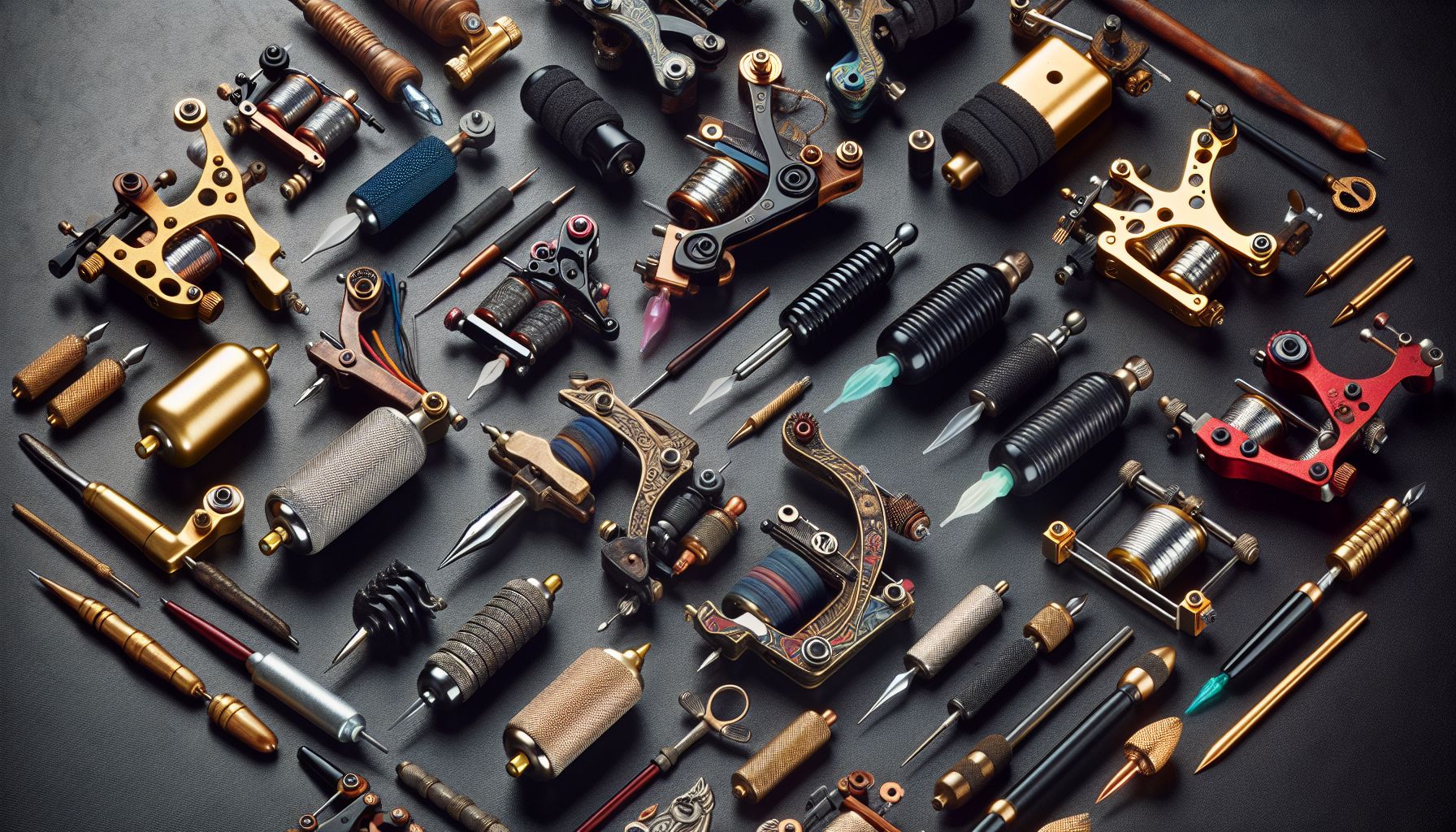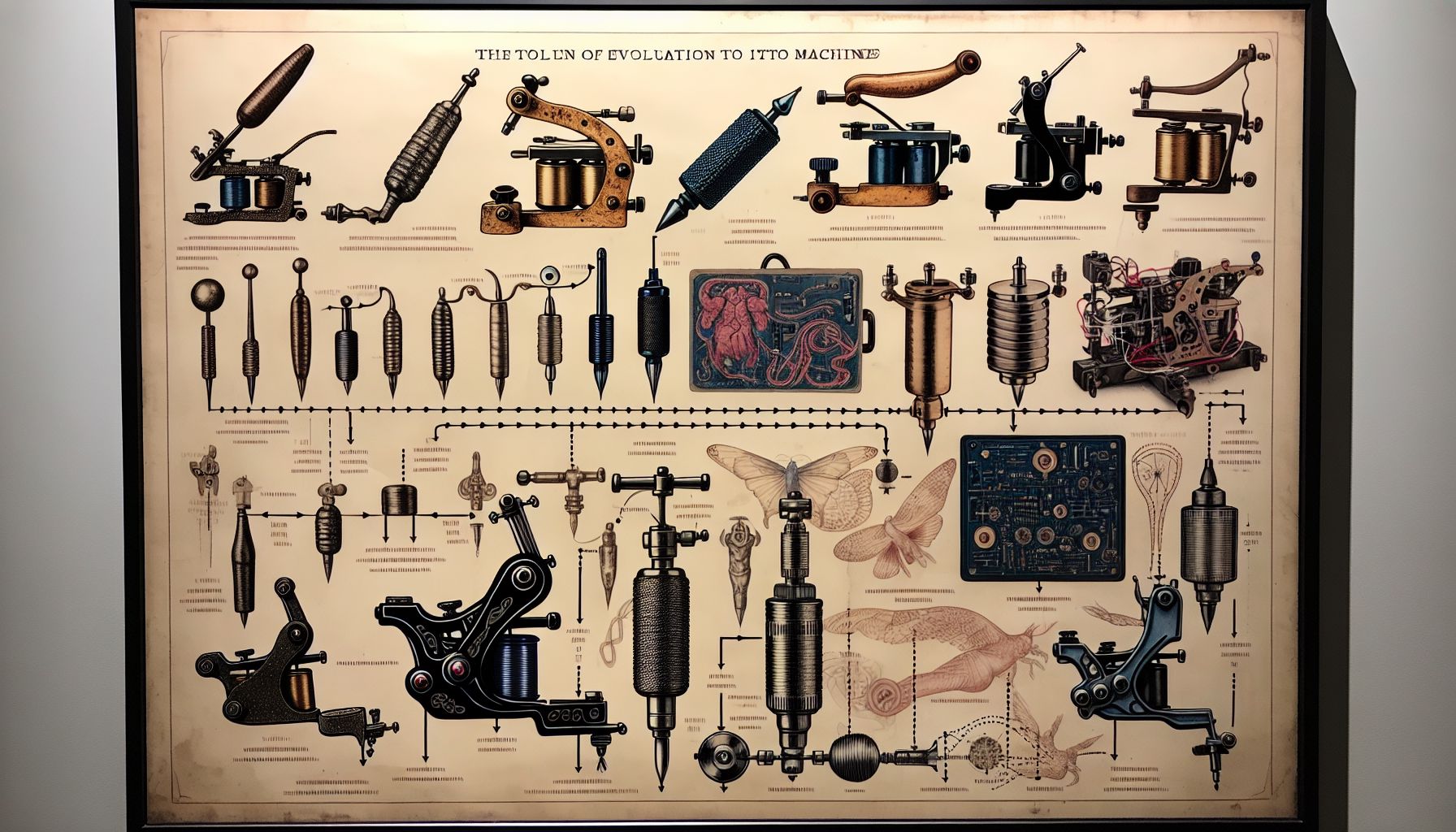The tattoo industry has seen a transformative evolution over the years, especially in the realm of tattoo machines. With each buzz and whirr, these vital instruments have carried the dreams and designs of countless artists from mere thoughts into vibrant, living art on skin. In my journey through the ink-drenched annals of tattooing, I’ve watched as these machines have grown from rudimentary tools to sophisticated devices that merge craftsmanship with technology. Sharing my insights within this blog, I aim to provide fellow tattoo artists and enthusiasts a deeper understanding of the tattoo machine, a cornerstone among tattoo supplies.
Tattoo machines are, in many ways, the heartbeat of our industry. Whether you call it a tattoo gun, a liner, a shader, or by any other name, the machine’s importance is universally acknowledged. Early on, tattooing was done by hand, an arduous process known as “tapping.” The invention of the electric tattoo machine revolutionized the industry, making tattooing more accessible and vastly improving precision and efficiency.
The first electric tattoo machines were based on Thomas Edison’s electric pen, intended for duplication purposes. Samuel O’Reilly’s adaptation of Edison’s device in 1891 paved the way for modern tattooing. Many machines used neoteric variations of O’Reilly’s design for decades. However, the relentless pursuit of better tools has led to a diverse array of machines today, with two main types dominating: coil and rotary.
Coil tattoo machines, known for their characteristic buzz, use an electromagnetic circuit to move the needle. A staple of the industry for years, a standard coil machine consists of coils, a contact screw, a spring, an armature bar, and the needle itself. The buzzing is a by-product of the circuit breaking and reconnecting as the needle moves, a familiar soundtrack to any tattoo shop.
The rotary tattoo machine, which came much later, operates on a different principle—the use of a gear system to move the needle in a smooth, cyclical pattern. Initially adopted by artists for their quieter operation and fewer moving parts, rotary machines have now carved out their niche for the consistency of their needle movement and gentleness on the skin.
Let me share with you an anecdote of my own transition from coil to rotary machines. I remember the day I switched it was like discovering a new color on the palette. The comparative silence of the rotary’s operation was disconcerting at first, a stark contrast to the buzzing I had come to associate with tattooing. But as I continued, I realized the control and consistency afforded by this new machine were unmatched. Upon finishing my first piece with a rotary, the crisp lines and saturated colors spoke volumes of the machine’s capabilities.
Choosing a tattoo machine boils down to personal preference and style. Some artists swear by the tactile feedback of coil machines, while others prefer the precision and quiet operation of rotary machines. I’ve watched apprentices develop their styles based on the machine they chose and veterans switch allegiances after years of dedication to a particular type.
A tattoo machine’s evolution doesn’t end with its operating principle. The rise of pneumatic tattoo machines, which use air to move the needle, points to our industry’s eagerness to innovate. Furthermore, wireless tattoo machines have made strides in recent years, removing the tether of power cables and increasing an artist’s freedom of movement.
But with any tool, the quality of craftsmanship matters. When I stock machines for sale, I look at the build quality, material durability, and ergonomic design—a poorly built machine will not only hinder an artist’s ability to tattoo but can also cause strain and injury over time. Trustworthy brands that consistently deliver high-quality tattoo machines earn their reputations, and deservedly so.
When navigating through the plethora of tattoo supply options, adhering to proper maintenance and aftercare is crucial. A tattoo machine is an investment, and regular upkeep—such as periodic cleaning and tuning for coil machines, or replacing parts for rotary machines—is essential for optimal performance. In my own practice, maintaining hygiene and machine care go hand-in-hand. I emphasize this to every artist: a well-maintained machine is a reliable and safe one.
As you look to purchase your next tattoo machine, consider the style of tattoos you predominantly work on, your comfort with machine maintenance, and the ergonomics of the device. Remember, the tattoo machine is your partner in the dance of ink; it deserves as much attention and care as the art you create.
In conclusion, navigating the ever-expanding sea of tattoo supplies can be daunting, but focusing on the heart of tattooing—the tattoo machine—can guide you toward the right choice for your artistry. The evolution of tattoo machines from simple buzzing coils to intricate, silent rotaries encapsulates our industry’s diverse and progressive spirit. Whether you’re an established pro or a fresh-faced apprentice, understanding the nuances of these tools can elevate your work from good to breathtaking. As the industry continues to pulse and grow, who knows what the next revolution of tattoo machines will bring? But one thing remains certain: the artistry will continue to thrive on the skin of those who appreciate the melding of passion, precision, and persistence.



